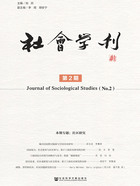
参考文献
薄大伟,2014,《单位的前世今生:中国城市的社会空间与治理》,南京:东南大学出版社。
陈传波、白南生、赵延东,2012,《适应性区群抽样:研究流动农民工的方法与实践》,《统计研究》第5期。
高鉴国,2006,《新马克思主义城市理论》,北京:商务印书馆。
顾朝林、王法辉、刘贵利,2003,《北京城市社会区分析》,《地理学报》第6期。
何江、张馨之,2006,《中国区域经济增长及其收敛性:空间面板数据分析》,《南方经济》第5期。
滑锡林,2016,《行政机关前端经济政治比较》,北京:北京交通大学出版社。
李路路、李升,2007,《“殊途异类”:当代中国城镇中产阶级的类型化分析》,《社会学研究》第6期。
李志刚、吴缚龙、肖扬,2014,《基于全国第六次人口普查数据的广州新移民居住分异研究》,《地理研究》第11期。
帕克,1987,《城市社会学:芝加哥学派城市研究文集》,北京:华夏出版社。
孙秀林、施润华、顾艳霞,2017,《居住隔离指数回顾:方法、计算、示例》,《山东社会科学》第12期。
吴庆华,2013,《城市空间类隔离:基于住房视角的转型社会分析》,黑龙江:黑龙江大学出版。
杨菊华、朱格,2016,《心仪而行离:流动人口与本地市民居住隔离研究》,《山东社会科学》第1期。
袁媛、许学强,2008,《广州市外来人口居住隔离及影响因素研究》,《人文地理》第5期。
赵聚军,2013,《社会稳定的增压阀:对居住隔离现象的政治社会学解读》,《江海学刊》第6期。
Alba,R.D.& Logan,J.R.1993.“Minority Proximity to Whites in Suburbs:An Individual-Level Analysis of Segregation.”American Journal of Sociology 98(6):1388-1427.
Borjas,G.J.1997.“To Ghetto or Not to Ghetto:Ethnicity and Residential Segregation.”Journal of Urban Economics 44(2):228-253.
Burgess,E.W.1925.“The Growth of the City.”Edited by Park R.E.et al.,The City.Chicago:Chicago University Press.
Crowder,K.,Hall,M.,and Tolnay,S. E.2011.“Neighborhood Immigration and Native Out-Migration.”American Sociological Review 76(1):25-47.
Duncan,O.D.& Duncan,B.1955.“A Methodological Analysis of Segregation Indexes.”American Sociological Review 20(2):210-217.
Fischer,M.J.and Massey,D.S.2000.“Residential Segregation and Ethnic Enterprise in U.S.Metropolitan Areas.”Social Problems 47(3):408-424.
Lee,B.A.,Firebaugh,G.,and Matthews,S.A.,et al.2008.“Beyond the Census Tract:Patterns and Determinants of Racial Segregation at Multiple Geographic Scales.”American Sociological Review 73(5):766-791.
Lefebvre,Henri.1991.The Production of Space.Blackwell.
Lieberson,Stanley and Schwirian,Kent P.1962.“Banking Functions as an Index of Inter-city Relations.”Journal of Regional Science 4(1):69-81.
Massey,D.S.,Condran,G.A.,and Denton,N.A.1987.“The Effect of Residential Segregation on Black Social and Economic Well-Being.”Social Forces 66(1):29-56.
Massey,D.S.,Gross,A.B.,and Shibuya,K.1994.“Migration,Segregation,and the Geographic Concentration of Poverty.”American Sociological Review 59(3):425-445.
Massey,D.S.1990.“American Apartheid:Segregation and the Making of the Underclass.”American Journal of Sociology 96(2):329-357.
Morrill,Richard L.1991.“On the Measure of Geographic Segregation.”Geography Research Forum 11:25-36.
Park,Robert E.1950.“The Race Relations Cycle in Hawaii.”Edited by Everett Hughes,Race and Culture.Chicago:University of Chicago Press.
Quillian,L.2012.“Segregation and Poverty Concentration:The Role of Three Segregations.”American Sociological Review 77(3):354-379.
Reardon,S.F.& O'Sullivan,D.2004.“Measures of Spatial Segregation.”Sociological Methodology 34(1):121-162.
Saiz,A.& Wachter,S.2006.“Immigration and the Neighborhood.”American Economic Journal Economic Policy 3(2):169-188.
Schelling,Thomas C.1971.“Dynamic Models of Segregation.”Journal of Mathematical Sociology 1(2):143-186.
Seber,G.A.F.and Salehi,M.M.2013.Adaptive Sampling Designs.Springer-Verlag Berlin Heidelberg.
Watson,T.2010.“Inequality and the Measurement of Residential Segregation by Income in American Neighborhoods.”Review of Income & Wealth 55(3):820-844.
White,Michael J.1983.“The Measurement of Spatial Segregation.”American Journal of Sociology 88(5):1008-1018.
[1]梁玉成,中山大学社会学与人类学学院社会学与社会工作系教授,lyucheng@mail.sysu.edu.cn;李蔓莉,中山大学社会学与人类学学院博士研究生。
[2]《广州市人民政府办公厅关于进一步完善我市房地产市场平稳健康发展政策的通知》,http://www.gz.gov.cn/gzgov/gsgg/201703/bce12430c7254129a429b6f6cec1430f.shtml。
[3]阈值:上海市老城区阈值为0.7,新城区阈值为0.6;广州市老城区阈值为0.65,新城区阈值为0.45。
[4]计算方式: 。
。